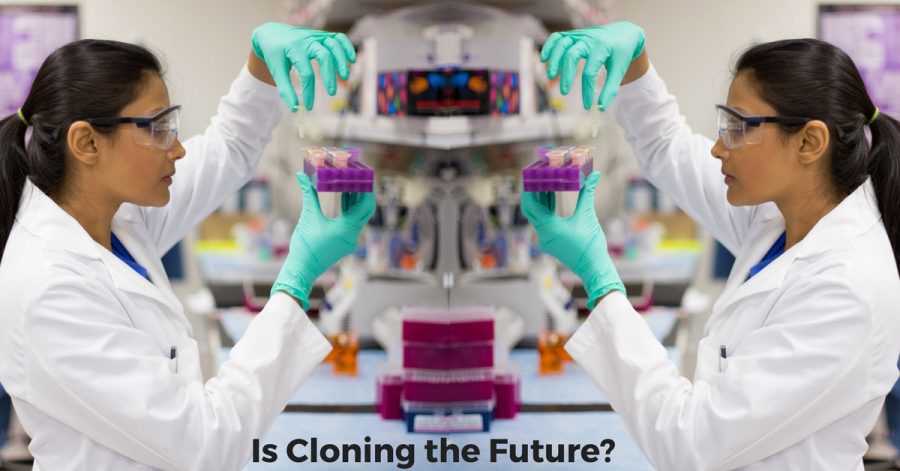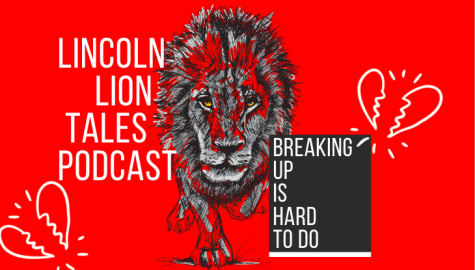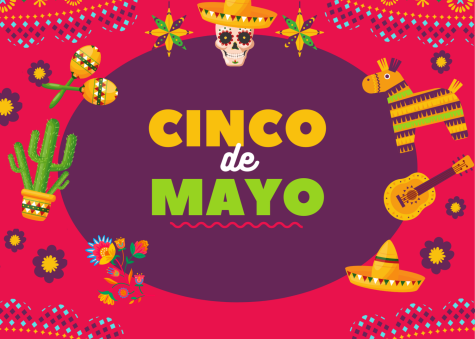How Cloning and Genetic Modification is Changing the World
Twenty-two years ago, Scottish scientists at the University of Edinburgh stunned the world. They had just accomplished something that had never done before. Could what they had just done change the future of the world forever? And how would the world react?
They announced that Dolly, the first mammal to ever be successfully cloned, had just been born. Dolly, a sheep, was produced from udder cells that had been frozen for six years. Until Dolly, many researchers had thought that cloning mammals was impossible, because it required taking adult cells “converting” them into young cells again.
This would mean that the original cell from the adult body would require neither a sperm nor an egg cell to create a new animal. All the cell would need is a suitable environment to grow, such as a surrogate animal’s womb.
Steven Stice, director of the Regenerative Bioscience Center at the University of Georgia, said of the experiment, “nobody in the science community thought it would have worked.”
But once cloning proved to be possible, researchers learned from the feat and began improving their method and testing it on other species. Since Dolly was born, researchers have cloned 24 mammal species, including cattle, cats, deer, dogs, horses, mules, oxen, rabbits and most recently, monkeys.
In recent days, cloning has been creating quite a buzz. More and more people are exposed to cloning in their day to day lives. Seeds have been modified to grow in harsh climates, emit natural pesticides, and grow bigger harvests. Talks of cloning endangered animals to restore their populations has generated lots of excitement. Because of the groundbreaking effects this new technology has shown, there has been a vast increase in the amount of research and studies in the subject.
Stem cell biologist Shinya Yamanaka said that Dolly’s cloning motivated him to begin developing stem cells derived from adult cells, an accomplishment that won him a Nobel Prize in 2012. “Dolly the Sheep … encouraged me to start my own project,” wrote Yamanaka, who splits his time between the University of California, San Francisco and Kyoto University in Japan. He used adult cells first in mice, although the technique is now feasible in human cells, to make stem cells that can form a wide range of other cells.
Monsanto, an agrochemical company, has been the center of controversy for their chemical engineering of seeds and crops. Claims have surfaced that their GMOs (genetically modified organisms) cause a wide variety of health concerns, from eczema to cancer. No conclusive evidence has been provided to prove any of these claims, yet many stand by these beliefs. Regardless, their products continue to stock grocery shelves, with an estimated 60 to 70 percent of grocery items in the U.S. containing GMOs.
Humans have more to thank cloning for than just their food, though. The stem cell advances that cloning has sparked has been cloning’s biggest impact, several researchers say. Stem cell research has shown promising signs towards developing new medicines and treatments for troubling diseases such as cancer or heart disease.
The National Institutes of Health indicates that approximately 1.1 million Americans suffer a heart attack each year, and together cardiovascular diseases and cancers are the top two causes of death according to the CDC, with each killing over half a million Americans each year.
“Regenerative medicine holds the promise of new ways to repair cardiovascular damage and of improved cancer treatment,” reads a statement issued by the New York state funded stem research program. “Moreover,” it continues, “there are many other diseases and afflictions that stand to be positively impacted by stem cell research including: stroke, respiratory disease, diabetes (respectively 3, 4 and 7 on the CDC list of causes of death), neurological disorders, spinal cord injuries, and some birth defects.”
The reality of the situation brings up many ethical and philosophical questions. Are embryos’ lives equal to that of a full human? How far is too far in regards to modifying the human embryo?
The official statement by the U.S. State Department on cloning acknowledges the fact that human stem cells offer the possibility of a renewable source of cells and tissues to treat a myriad of diseases. This would be facilitated by creating clones of human embryos. However, it is also stated in the response that “the United States supports a global and comprehensive ban on human cloning… regardless of the purpose for which the human clone is produced.”
The topic has not drawn lots of attention from the religious community. However, some church officials have offered their own interpretation.
Fundamentalist Christian groups believe that cloning is “playing God.” The idea of man recreating what God has done to create life goes against the beliefs of what Christianity deems acceptable. Eugene C. Newman, a Jewish Christian since 1981 and Ruling Elder in his EPC church, says that “by [imitating God] we mean that man attempts to replicate [life] in its natural beauty…Man has no reign over the creation of life.”
While most popular religions share this view on cloning, Islam’s stance is much different. Cloning specific parts of the human body for medical purposes would not be prohibited in Islam, this would be permitted and actually recommended and rewarded by Allah. Cloning the whole human body, on the other hand, would not be permitted under any circumstances.
The well-known actor Barbra Streisand has firsthand experience with cloning. Her beloved Coton de Tulear dog, Samantha, passed away in 2017 at the age of 14.
So how did Streisand decide to grieve?
She contracted ViaGen, a relatively new company out of Texas, to create two clones of her dogs for a price of $50,000 each. Yet, they’re not quite Samantha. Streisand revealed that “[the clones] have different personalities” than Samantha. Still, she remains “super excited” about her new puppies. In an interview for Variety she exudes eagerness, mentioning she is “waiting for them to get older so I can see if they have her brown eyes and seriousness.” She can now be seen commonly posting pictures of her new pups all over her social media accounts.
But experts remain wary about cloning and the implications it can have on animals’ health. John Woestendiek, Pulitzer Prize winner and author of the book “Dog, Inc.: The Uncanny Inside Story of Cloning Man’s Best Friend,” argues that cloning dogs violates basic morals and values. He says that in the creation of a single dog in 2012, “embryos were implanted into 120 female dogs who served as surrogates,” and adds that “many of those were aborted along the way.” Cloning a single dog resulted in the death or abortion of over 100 other dog embryos. This, he says, presents “a major ethical issue.”
Some scientists say the case against cloning humans is the safety of the clone. There is no guarantee full human clones would be healthy and not suffer any health defects. “The technology to clone humans [safely] just isn’t there,” says Lawrence Brody, director for the Division of Genomics and Society at the National Institutes of Health. Former President of the United States Barack Obama says “It is dangerous, profoundly wrong and has no place in our society, or any society.”
Despite possible dangers and moral dilemmas, stem cell research currently continues to be conducted on human embryos across the United States. Stem cell research was deemed legal by the Supreme Court due to embryos not having developed any form of consciousness yet.
The major ethical and philosophical question still stands. Are the risks of creating human life worth the benefits?
Sources:
“Barbra Streisand Explains: Why I Cloned My Dog.” New York Times, NYT, 4 Mar. 2018, www.nytimes.com/2018/03/02/style/barbra-streisand-cloned-her-dog.html.
Commonly Asked Questions about the Food Safety of GMOs. 6 Apr. 2017, monsanto.com/company/commitments/safety/statements/are-gmos-safe/
“Cloning.” National Human Genome Research Institute , 21 Mar. 2017, www.genome.gov/25020028/cloning-fact-sheet/#al-8.
Jabr, Ferris. “Will Cloning Ever Save Endangered Animals?” Scientific American, 11 Mar. 2013, www.scientificamerican.com/article/cloning-endangered-animals/.
Niccol, Andrew, director. Gattaca–Electronic Press Kit. Columbia Pictures, Jersey Films, 1997.
NPR, NPR, www.npr.org/news/specials/cloning/faq_blanknav.html.
NYSTEMCELL. “What Are the Benefits of Stem Cells.” STEM CELL NY, stemcell.ny.gov/faqs/what-are-potential-benefits-stem-cell-research.
Reuters. “Barbra Streisand Reveals She Cloned Her Dog Twice.” The Guardian, Guardian News and Media, 28 Feb. 2018, www.theguardian.com/culture/2018/feb/28/barbra-streisand-cloned-her-dog-twice-variety.
Sullivan, Bob. “Religions Reveal Little Consensus on Cloning.” NBCNews.com, NBCUniversal News Group, 26 Nov. 2003, www.nbcnews.com/id/3076930/ns/health-special_reports/t/religions-reveal-little-consensus-cloning/.
U.S. Department of State, U.S. Department of State, www.state.gov/s/l/38722.html.
webmd. “Promising Treatment for Type 1 Diabetes.” WEBMD, 12 Jan. 2018, www.webmd.com/diabetes/news/20120611/stem-cells-type-1-diabetes#1.
Weintraub , Karen. “20 Years after Dolly the Sheep Led the Way—Where Is Cloning Now?”Scientific American, 5 July 2016, www.scientificamerican.com/article/20-years-after-dolly-the-sheep-led-the-way-where-is-cloning-now.
“What Is Cloning.” What Is Cloning, learn.genetics.utah.edu/content/cloning/whatiscloning/.
Wheat, Kathryn. World Human Cloning Policies . pp. 1–10, World Human Cloning Policies .









